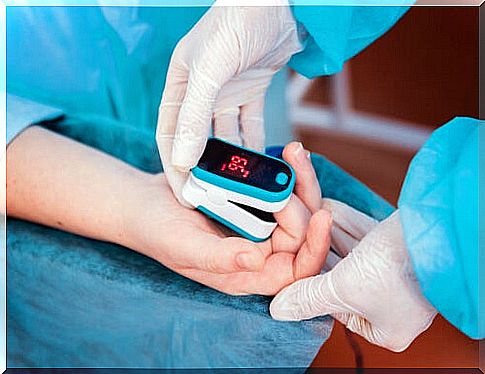What Is Oxygen Saturation?
Oxygen is an essential molecule for a large part of living beings. All the cells of our body use it as fuel to be able to carry out their functions. Therefore, oxygen saturation is a standard that we can measure and that is very important.
Oxygen saturation is defined as the fraction of hemoglobin in our blood that is bound to oxygen and, therefore, carries it. Hemoglobin is a component of our red blood cells that does just that: transport oxygen to all cells.
The measurement of this parameter has become an essential step in medicine. This is so because, when oxygen saturation levels are below a certain percentage, life is put at risk.
This problem is usually related to respiratory diseases. For example, the coronavirus can alter these levels, complicating the clinical picture. Therefore, in this article we explain everything you need to know about oxygen saturation.
What is oxygen saturation?
As we have already mentioned, oxygen saturation is a parameter that refers to the percentage of hemoglobin that is bound to oxygen. This percentage can vary depending on many aspects, such as respiratory function.
Saturation values are considered to be between 95% and 100%. This is so because, when figures below 89% are reached, cells cannot perform their functions correctly.
In fact, if oxygen saturation levels drop for a short period of time, there is no reason to damage our body. However, if this situation persists or is repeated, it does have consequences for the tissues.
When oxygen saturation drops, you enter a state called hypoxemia. It is the medical way of saying that the oxygen levels in the blood are below normal. It is usually related to circulatory or respiratory problems.
How is oxygen saturation measured?
Currently there are different ways to measure oxygen saturation. The most widely used and accessible is through a device called a pulse oximeter. It is a small device shaped like a clamp that can be attached to a finger or toe.
The pulse oximeter emits rays of light that pass through the blood and measure oxygen levels through the skin. Its operating mechanism is complex, but it allows knowing both the saturation and the heart rate.
Another way to measure oxygen saturation is arterial blood gas. It is a technique that is performed by drawing blood from an artery. Unlike the pulse oximeter, this technique allows other values to be measured, such as the percentage of carbon dioxide or blood pH.
However, although blood gas is a more complete test, it is also more complex and invasive. For this reason, in a normal way, the most used is the pulse oximeter, since it is fast and painless.

What happens in hypoxemic situations?
Hypoxemia can occur for a variety of reasons. First of all, because there is not enough oxygen in the air that we are breathing. It also depends on our lungs being able to do their job well. That is, they correctly inhale oxygen and eliminate carbon dioxide.
Also, hypoxemia can be caused by a circulatory problem. It is necessary that the blood can reach the lungs and take up oxygen to transport it to all parts of the body. Some specific causes are asthma or heart disease.
The most typical symptom when oxygen saturation drops is shortness of breath. Headache, dizziness, and weakness may also appear. Even if the situation drags on, there can be confusion and disorientation.
What is it for?
In principle, a healthy person does not have to have a pulse oximeter at home or monitor oxygen saturation. However, it is a basic measurement at any level of medical care, especially if there are any respiratory or blood problems.
The usefulness that these small and portable devices have brought to medical care allows improving early diagnosis. At a glance, the doctor can have important information to define a treatment or hospitalization.









